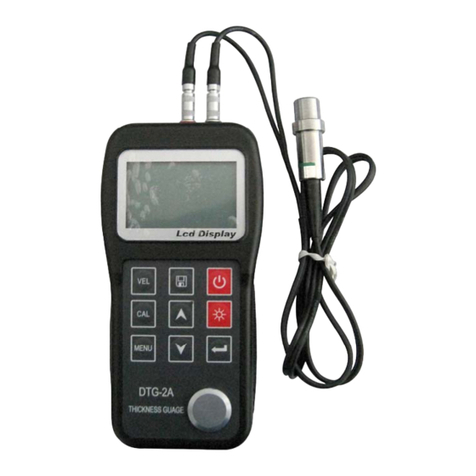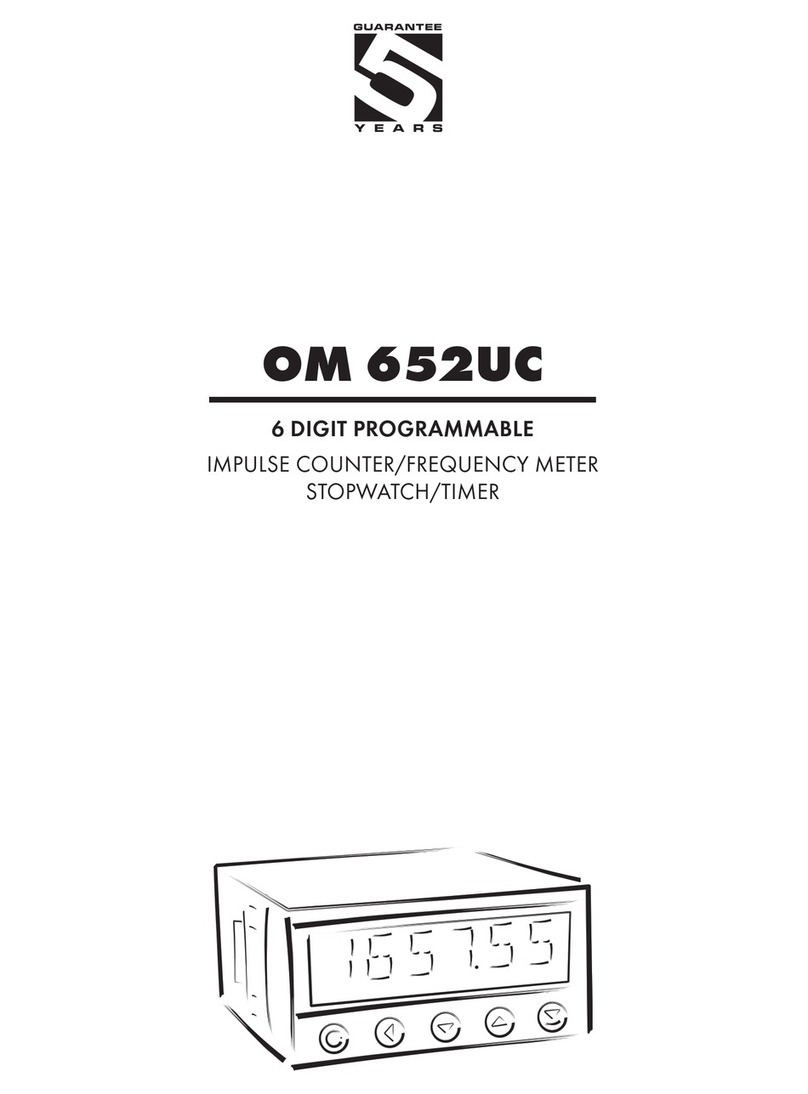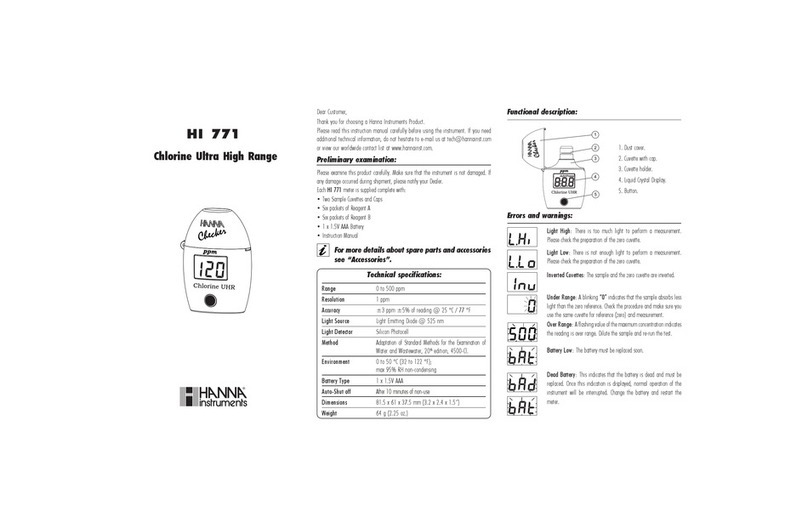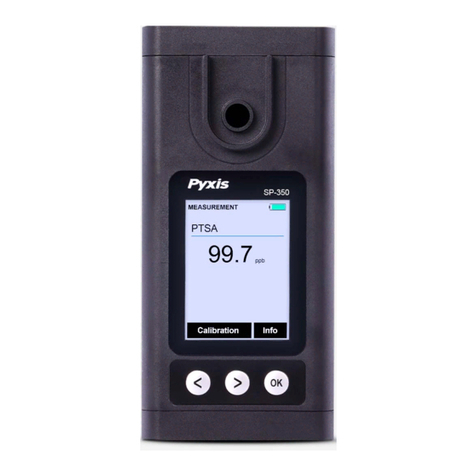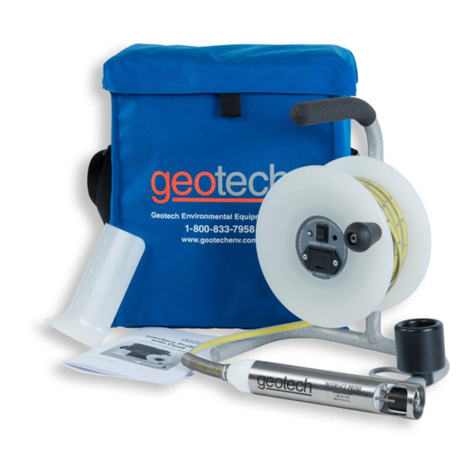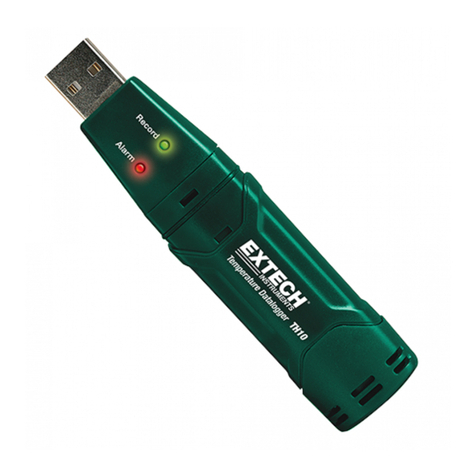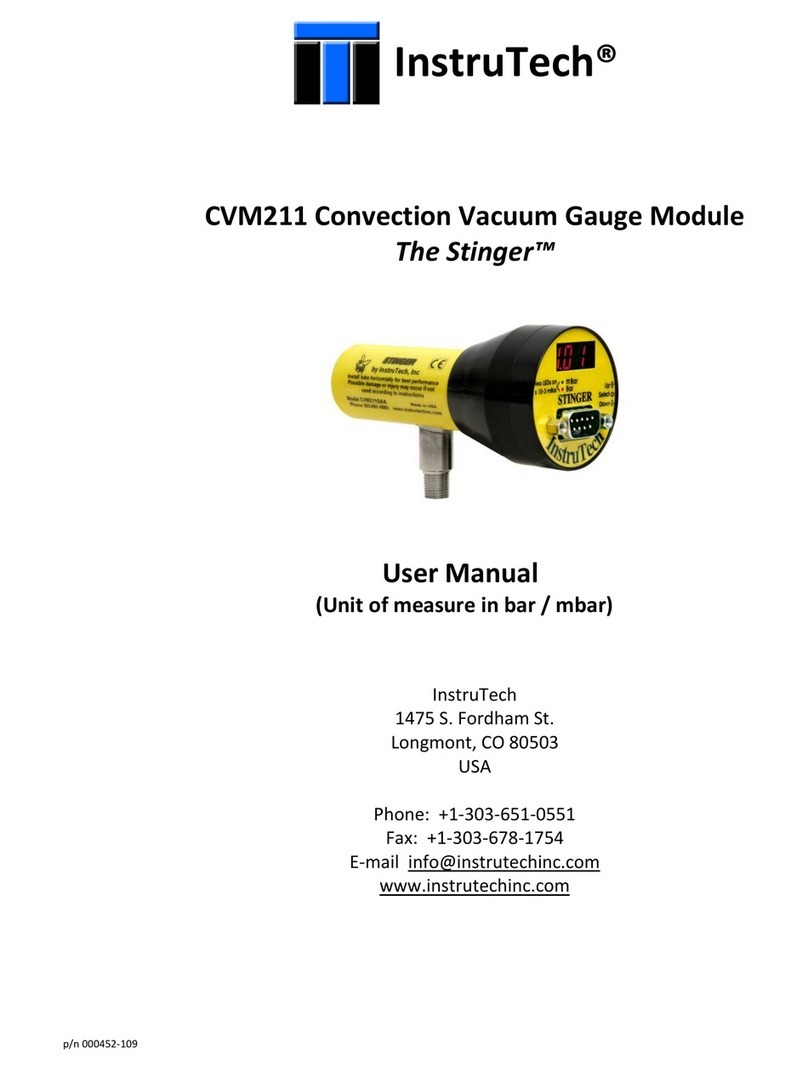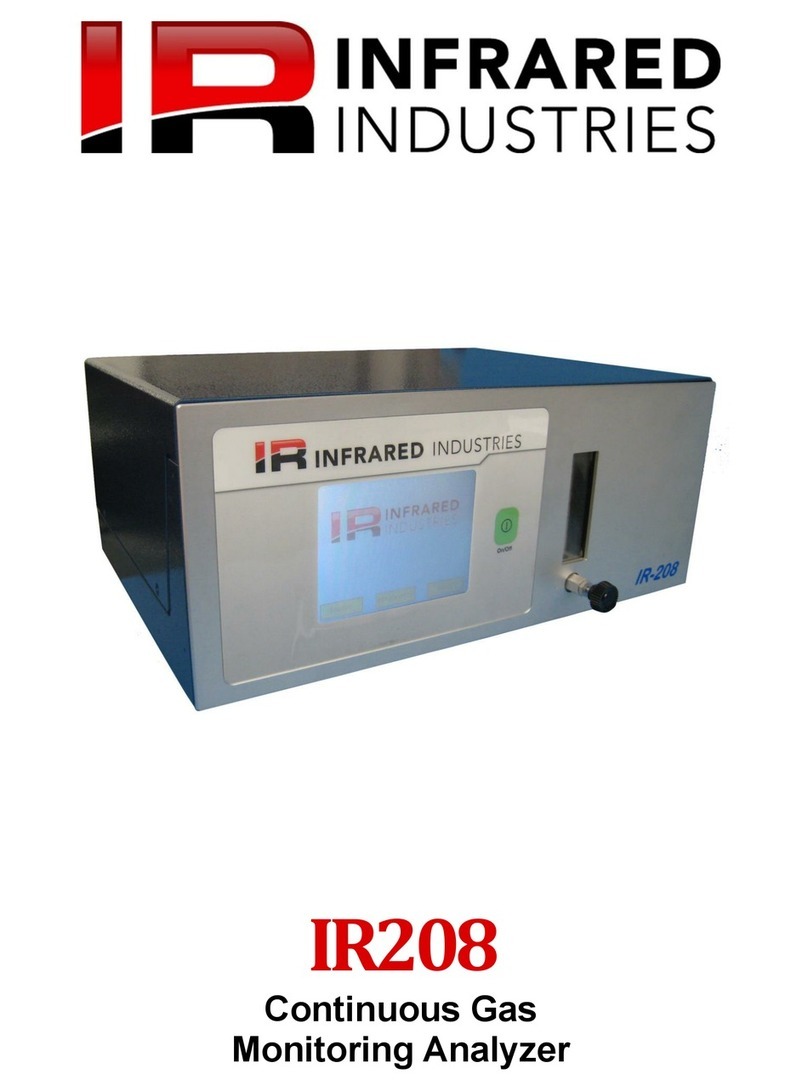Data Translation DT9828 User manual

DT9828 User’s Manual
UM-24984-A
Title Page

First Edition
January, 2013
Data Translation, Inc.
100 Locke Drive
Marlboro, MA 01752-1192
(508) 481-3700
www.datatranslation.com
Fax: (508) 481-8620
E-mail: [email protected]
Copyright © 2013 by Data Translation, Inc.
All rights reserved.
Information furnished by Data Translation, Inc. is believed to be
accurate and reliable; however, no responsibility is assumed by
Data Translation, Inc. for its use; nor for any infringements of
patents or other rights of third parties which may result from its
use. No license is granted by implication or otherwise under any
patent rights of Data Translation, Inc.
Use, duplication, or disclosure by the United States Government
is subject to restrictions as set forth in subparagraph (c)(1)(ii) of
the Rights in Technical Data and Computer software clause at 48
C.F.R, 252.227-7013, or in subparagraph (c)(2) of the Commercial
Computer Software - Registered Rights clause at 48 C.F.R.,
52-227-19 as applicable. Data Translation, Inc., 100 Locke Drive,
Marlboro, MA 01752.
Data Translation® is a registered trademark of Data Translation,
Inc. DT-Open LayersTM, DT-Open Layers for .NET Class
LibraryTM, DataAcq SDKTM, OMNI CDTM, LV-LinkTM , and
QuickDAQTM are trademarks of Data Translation, Inc.
All other brand and product names are trademarks or registered
trademarks of their respective companies.
Copyright Page

Radio and Television Interference
This equipment has been tested and found to comply with CISPR EN55022 Class A and
EN61000-6-1 requirements and also with the limits for a Class A digital device, pursuant to
Part 15 of the FCC Rules. These limits are designed to provide reasonable protection against
harmful interference when the equipment is operated in a commercial environment. This
equipment generates, uses, and can radiate radio frequency energy and, if not installed and
used in accordance with the instruction manual, may cause harmful interference to radio
communications. Operation of this equipment in a residential area is likely to cause harmful
interference, in which case the user will be required to correct the interference at his own
expense.
Changes or modifications to this equipment not expressly approved by Data Translation could
void your authority to operate the equipment under Part 15 of the FCC Rules.
Note: This product was verified to meet FCC requirements under test conditions that
included use of shielded cables and connectors between system components. It is important
that you use shielded cables and connectors to reduce the possibility of causing interference
to radio, television, and other electronic devices.
Canadian Department of Communications Statement
This digital apparatus does not exceed the Class A limits for radio noise emissions from
digital apparatus set out in the Radio Interference Regulations of the Canadian Department of
Communications.
Le présent appareil numérique n’émet pas de bruits radioélectriques dépassant les limites
applicables aux appareils numériques de la class A prescrites dans le Règlement sur le
brouillage radioélectrique édicté par le Ministère des Communications du Canada.
FCC
Page


5
Table of Contents
About this Manual . . . . . . . . . . . . . . . . . . . . . . . . . . . . . . . . . . . . . . . . . . . . . . . . . . . . . . 9
Intended Audience. . . . . . . . . . . . . . . . . . . . . . . . . . . . . . . . . . . . . . . . . . . . . . . . . . . . . . . . . . . . . 9
How this Manual is Organized . . . . . . . . . . . . . . . . . . . . . . . . . . . . . . . . . . . . . . . . . . . . . . . . . . 9
Conventions Used in this Manual . . . . . . . . . . . . . . . . . . . . . . . . . . . . . . . . . . . . . . . . . . . . . . . 10
Related Information . . . . . . . . . . . . . . . . . . . . . . . . . . . . . . . . . . . . . . . . . . . . . . . . . . . . . . . . . . . 10
Where To Get Help. . . . . . . . . . . . . . . . . . . . . . . . . . . . . . . . . . . . . . . . . . . . . . . . . . . . . . . . . . . . 11
Chapter 1: Overview . . . . . . . . . . . . . . . . . . . . . . . . . . . . . . . . . . . . . . . . . . . . . . . . . . . 13
Features . . . . . . . . . . . . . . . . . . . . . . . . . . . . . . . . . . . . . . . . . . . . . . . . . . . . . . . . . . . . . . . . . . . . . 14
Supported Software . . . . . . . . . . . . . . . . . . . . . . . . . . . . . . . . . . . . . . . . . . . . . . . . . . . . . . . . . . . 16
Accessories . . . . . . . . . . . . . . . . . . . . . . . . . . . . . . . . . . . . . . . . . . . . . . . . . . . . . . . . . . . . . . . . . . 18
Getting Started Procedure. . . . . . . . . . . . . . . . . . . . . . . . . . . . . . . . . . . . . . . . . . . . . . . . . . . . . . 19
Chapter 2: Installing a Module . . . . . . . . . . . . . . . . . . . . . . . . . . . . . . . . . . . . . . . . . . . 23
Unpacking . . . . . . . . . . . . . . . . . . . . . . . . . . . . . . . . . . . . . . . . . . . . . . . . . . . . . . . . . . . . . . . . . . . 25
Attaching Modules to the Computer. . . . . . . . . . . . . . . . . . . . . . . . . . . . . . . . . . . . . . . . . . . . . 26
Connecting Directly to the USB Ports . . . . . . . . . . . . . . . . . . . . . . . . . . . . . . . . . . . . . . . . 26
Connecting to an Expansion Hub . . . . . . . . . . . . . . . . . . . . . . . . . . . . . . . . . . . . . . . . . . . 27
Configuring the Device Driver. . . . . . . . . . . . . . . . . . . . . . . . . . . . . . . . . . . . . . . . . . . . . . . . . . 29
Chapter 3: Wiring Signals . . . . . . . . . . . . . . . . . . . . . . . . . . . . . . . . . . . . . . . . . . . . . . . 31
General Wiring Recommendations . . . . . . . . . . . . . . . . . . . . . . . . . . . . . . . . . . . . . . . . . . . . . . 33
Connecting Thermocouple Inputs . . . . . . . . . . . . . . . . . . . . . . . . . . . . . . . . . . . . . . . . . . . . . . . 34
Connecting Voltage Input Signals . . . . . . . . . . . . . . . . . . . . . . . . . . . . . . . . . . . . . . . . . . . . . . . 36
Connecting Current Loop Inputs. . . . . . . . . . . . . . . . . . . . . . . . . . . . . . . . . . . . . . . . . . . . . . . . 37
Connecting Digital Input Signals. . . . . . . . . . . . . . . . . . . . . . . . . . . . . . . . . . . . . . . . . . . . . . . . 38
Connecting Digital Output Signals . . . . . . . . . . . . . . . . . . . . . . . . . . . . . . . . . . . . . . . . . . . . . . 40
Chapter 4: Verifying the Operation of a Module . . . . . . . . . . . . . . . . . . . . . . . . . . . . . 41
Selecting the Device . . . . . . . . . . . . . . . . . . . . . . . . . . . . . . . . . . . . . . . . . . . . . . . . . . . . . . . . . . . 43
Thermocouple Measurement Example . . . . . . . . . . . . . . . . . . . . . . . . . . . . . . . . . . . . . . . . . . . 45
Configure the Channels . . . . . . . . . . . . . . . . . . . . . . . . . . . . . . . . . . . . . . . . . . . . . . . . . . . . 45
Configure the Parameters of the Acquisition Config Window . . . . . . . . . . . . . . . . . . . 46
Configure the Appearance of the Channel Plot Window . . . . . . . . . . . . . . . . . . . . . . . . 48
Configure the Appearance of the Channel Display Window. . . . . . . . . . . . . . . . . . . . . 50
Configure the Appearance of the Statistics Window. . . . . . . . . . . . . . . . . . . . . . . . . . . . 51
Position the Windows. . . . . . . . . . . . . . . . . . . . . . . . . . . . . . . . . . . . . . . . . . . . . . . . . . . . . . 51
Start the Measurement . . . . . . . . . . . . . . . . . . . . . . . . . . . . . . . . . . . . . . . . . . . . . . . . . . . . . 53
Table of Contents

Contents
6
Chapter 5: Principles of Operation . . . . . . . . . . . . . . . . . . . . . . . . . . . . . . . . . . . . . . . 57
Analog Input Features. . . . . . . . . . . . . . . . . . . . . . . . . . . . . . . . . . . . . . . . . . . . . . . . . . . . . . . . . 59
Analog Input Channels . . . . . . . . . . . . . . . . . . . . . . . . . . . . . . . . . . . . . . . . . . . . . . . . . . . . 59
Specifying a Single Channel . . . . . . . . . . . . . . . . . . . . . . . . . . . . . . . . . . . . . . . . . . . . 60
Specifying One or More Channels . . . . . . . . . . . . . . . . . . . . . . . . . . . . . . . . . . . . . . . 60
Cold Junction Compensation . . . . . . . . . . . . . . . . . . . . . . . . . . . . . . . . . . . . . . . . . . . . . . . 61
Open Thermocouple Detection . . . . . . . . . . . . . . . . . . . . . . . . . . . . . . . . . . . . . . . . . . . . . . 61
Input Ranges and Gains . . . . . . . . . . . . . . . . . . . . . . . . . . . . . . . . . . . . . . . . . . . . . . . . . . . . 61
Input Resolution . . . . . . . . . . . . . . . . . . . . . . . . . . . . . . . . . . . . . . . . . . . . . . . . . . . . . . . . . . 62
A/D Sample Clock . . . . . . . . . . . . . . . . . . . . . . . . . . . . . . . . . . . . . . . . . . . . . . . . . . . . . . . . 62
Input Trigger . . . . . . . . . . . . . . . . . . . . . . . . . . . . . . . . . . . . . . . . . . . . . . . . . . . . . . . . . . . . . 63
Analog Input Conversion Modes . . . . . . . . . . . . . . . . . . . . . . . . . . . . . . . . . . . . . . . . . . . . 63
Single-Value Operations . . . . . . . . . . . . . . . . . . . . . . . . . . . . . . . . . . . . . . . . . . . . . . . . 63
Continuous Scan Mode . . . . . . . . . . . . . . . . . . . . . . . . . . . . . . . . . . . . . . . . . . . . . . . . 64
Filtering. . . . . . . . . . . . . . . . . . . . . . . . . . . . . . . . . . . . . . . . . . . . . . . . . . . . . . . . . . . . . . . . . . 65
Data Format . . . . . . . . . . . . . . . . . . . . . . . . . . . . . . . . . . . . . . . . . . . . . . . . . . . . . . . . . . . . . . 65
Error Conditions . . . . . . . . . . . . . . . . . . . . . . . . . . . . . . . . . . . . . . . . . . . . . . . . . . . . . . . . . . 66
Digital I/O Features. . . . . . . . . . . . . . . . . . . . . . . . . . . . . . . . . . . . . . . . . . . . . . . . . . . . . . . . . . . 67
Digital Input Lines . . . . . . . . . . . . . . . . . . . . . . . . . . . . . . . . . . . . . . . . . . . . . . . . . . . . . . . . 67
Digital Output Lines . . . . . . . . . . . . . . . . . . . . . . . . . . . . . . . . . . . . . . . . . . . . . . . . . . . . . . . 67
Resolution. . . . . . . . . . . . . . . . . . . . . . . . . . . . . . . . . . . . . . . . . . . . . . . . . . . . . . . . . . . . . . . . 68
Operation Modes. . . . . . . . . . . . . . . . . . . . . . . . . . . . . . . . . . . . . . . . . . . . . . . . . . . . . . . . . . 68
Chapter 6: Supported Device Driver Capabilities. . . . . . . . . . . . . . . . . . . . . . . . . . . . 69
Data Flow and Operation Options. . . . . . . . . . . . . . . . . . . . . . . . . . . . . . . . . . . . . . . . . . . . . . . 71
Buffering . . . . . . . . . . . . . . . . . . . . . . . . . . . . . . . . . . . . . . . . . . . . . . . . . . . . . . . . . . . . . . . . . . . . 72
Triggered Scan Mode . . . . . . . . . . . . . . . . . . . . . . . . . . . . . . . . . . . . . . . . . . . . . . . . . . . . . . . . . . 72
Data Encoding. . . . . . . . . . . . . . . . . . . . . . . . . . . . . . . . . . . . . . . . . . . . . . . . . . . . . . . . . . . . . . . . 72
Channels . . . . . . . . . . . . . . . . . . . . . . . . . . . . . . . . . . . . . . . . . . . . . . . . . . . . . . . . . . . . . . . . . . . . 73
Gain . . . . . . . . . . . . . . . . . . . . . . . . . . . . . . . . . . . . . . . . . . . . . . . . . . . . . . . . . . . . . . . . . . . . . . . . 73
Ranges . . . . . . . . . . . . . . . . . . . . . . . . . . . . . . . . . . . . . . . . . . . . . . . . . . . . . . . . . . . . . . . . . . . . . . 74
Resolution . . . . . . . . . . . . . . . . . . . . . . . . . . . . . . . . . . . . . . . . . . . . . . . . . . . . . . . . . . . . . . . . . . . 74
Thermocouple and RTD Support. . . . . . . . . . . . . . . . . . . . . . . . . . . . . . . . . . . . . . . . . . . . . . . . 75
IEPE Support. . . . . . . . . . . . . . . . . . . . . . . . . . . . . . . . . . . . . . . . . . . . . . . . . . . . . . . . . . . . . . . . . 75
Strain Gage Support. . . . . . . . . . . . . . . . . . . . . . . . . . . . . . . . . . . . . . . . . . . . . . . . . . . . . . . . . . . 76
Start Triggers . . . . . . . . . . . . . . . . . . . . . . . . . . . . . . . . . . . . . . . . . . . . . . . . . . . . . . . . . . . . . . . . . 76
Reference Triggers . . . . . . . . . . . . . . . . . . . . . . . . . . . . . . . . . . . . . . . . . . . . . . . . . . . . . . . . . . . . 77
Clocks. . . . . . . . . . . . . . . . . . . . . . . . . . . . . . . . . . . . . . . . . . . . . . . . . . . . . . . . . . . . . . . . . . . . . . . 77
Counter/Timers . . . . . . . . . . . . . . . . . . . . . . . . . . . . . . . . . . . . . . . . . . . . . . . . . . . . . . . . . . . . . . 78
Tachometer . . . . . . . . . . . . . . . . . . . . . . . . . . . . . . . . . . . . . . . . . . . . . . . . . . . . . . . . . . . . . . . . . . 79

Contents
7
Chapter 7: Calibration . . . . . . . . . . . . . . . . . . . . . . . . . . . . . . . . . . . . . . . . . . . . . . . . . . 81
About Calibration. . . . . . . . . . . . . . . . . . . . . . . . . . . . . . . . . . . . . . . . . . . . . . . . . . . . . . . . . . . . . 82
Running the Calibration Utility . . . . . . . . . . . . . . . . . . . . . . . . . . . . . . . . . . . . . . . . . . . . . . . . 83
Calibrating the Voltage Offset and Gain . . . . . . . . . . . . . . . . . . . . . . . . . . . . . . . . . . . . . . . . . . 84
Calibrating the CJC . . . . . . . . . . . . . . . . . . . . . . . . . . . . . . . . . . . . . . . . . . . . . . . . . . . . . . . . . . . 85
Chapter 8: Troubleshooting . . . . . . . . . . . . . . . . . . . . . . . . . . . . . . . . . . . . . . . . . . . . . 87
General Checklist . . . . . . . . . . . . . . . . . . . . . . . . . . . . . . . . . . . . . . . . . . . . . . . . . . . . . . . . . . . . . 88
Technical Support . . . . . . . . . . . . . . . . . . . . . . . . . . . . . . . . . . . . . . . . . . . . . . . . . . . . . . . . . . . . 90
If Your Module Needs Factory Service . . . . . . . . . . . . . . . . . . . . . . . . . . . . . . . . . . . . . . . . . . . 91
Appendix A: Specifications . . . . . . . . . . . . . . . . . . . . . . . . . . . . . . . . . . . . . . . . . . . . . 93
Basic Module Specifications . . . . . . . . . . . . . . . . . . . . . . . . . . . . . . . . . . . . . . . . . . . . . . . . . . . . 94
Thermocouple Specifications . . . . . . . . . . . . . . . . . . . . . . . . . . . . . . . . . . . . . . . . . . . . . . . . . . . 95
System Temperature Error . . . . . . . . . . . . . . . . . . . . . . . . . . . . . . . . . . . . . . . . . . . . . . . . . . 95
Temperature Measurement Noise . . . . . . . . . . . . . . . . . . . . . . . . . . . . . . . . . . . . . . . . . . . 97
Thermocouple Noise Calculation Example . . . . . . . . . . . . . . . . . . . . . . . . . . . . . . . 98
Voltage Measurement Specifications . . . . . . . . . . . . . . . . . . . . . . . . . . . . . . . . . . . . . . . . . . . . . 99
Input Signal Bandwidth . . . . . . . . . . . . . . . . . . . . . . . . . . . . . . . . . . . . . . . . . . . . . . . 100
Digital I/O Specifications . . . . . . . . . . . . . . . . . . . . . . . . . . . . . . . . . . . . . . . . . . . . . . . . . . . . . 101
Isolation and Protection Specifications . . . . . . . . . . . . . . . . . . . . . . . . . . . . . . . . . . . . . . . . . . 102
Power, Physical, and Environmental Specifications . . . . . . . . . . . . . . . . . . . . . . . . . . . . . . . 103
Terminal Block Specifications. . . . . . . . . . . . . . . . . . . . . . . . . . . . . . . . . . . . . . . . . . . . . . . . . . 104
Regulatory Specifications . . . . . . . . . . . . . . . . . . . . . . . . . . . . . . . . . . . . . . . . . . . . . . . . . . . . . 105
Appendix B: Pin Assignments and LED Status Indicators . . . . . . . . . . . . . . . . . . . 107
Analog Input Screw Terminal Block (TB1) . . . . . . . . . . . . . . . . . . . . . . . . . . . . . . . . . . . . . . . 108
Digital I/O Screw Terminal Block (TB2) . . . . . . . . . . . . . . . . . . . . . . . . . . . . . . . . . . . . . . . . . 109
USB Connector . . . . . . . . . . . . . . . . . . . . . . . . . . . . . . . . . . . . . . . . . . . . . . . . . . . . . . . . . . . . . . 110
LED Status Indicators . . . . . . . . . . . . . . . . . . . . . . . . . . . . . . . . . . . . . . . . . . . . . . . . . . . . . . . . 111
Index . . . . . . . . . . . . . . . . . . . . . . . . . . . . . . . . . . . . . . . . . . . . . . . . . . . . . . . . . . . . . . . 113

Contents
8

9
About this Manual
The first part of this manual describes how to install and set up your DT9828 module and
device driver, and verify that your module is working properly.
The second part of this manual describes the features of the DT9828 module, the capabilities of
the DT9828 Device Driver, and how to program the DT9828 module using the DT-Open
Layers for .NET Class Library™software. Troubleshooting and calibration information is also
provided.
Note: For information on checking system requirements, installing the software, and
viewing the documentation, refer to the README file on the OMNI CD.
For more information on the class library, refer to the DT-Open Layers for .NET Class Library
User’s Manual. If you are using the DataAcq SDK or a software application to program your
device, refer to the documentation for that software for more information.
Intended Audience
This document is intended for engineers, scientists, technicians, or others responsible for
using and/or programming the DT9828 module for data acquisition operations in the
Microsoft® Windows® XP, or Windows Vista®, Windows 7, or Windows 8 operating system.
It is assumed that you have some familiarity with data acquisition principles and that you
understand your application.
How this Manual is Organized
The manual is organized as follows:
•Chapter 1, “Overview,” describes the major features of the DT9828 module, as well as the
supported software and accessories for the modules.
•Chapter 2, “Installing a Module,” describes how to install a DT9828 module.
•Chapter 3, “Wiring Signals,” describes how to wire signals to a DT9828 module.
•Chapter 4, “Verifying the Operation of a Module,” describes how to verify the operation
of the DT9828 module with the QuickDAQ application.
•Chapter 5, “Principles of Operation,” describes all of the features of the DT9828 module
and how to use them in your application.
•Chapter 6, “Supported Device Driver Capabilities,” lists the data acquisition subsystems
and the associated features accessible using the DT9828 Device Driver.
•Chapter 7, “Calibration,” describes how to calibrate the analog input circuitry of the
DT9828 module.
•Chapter 8, “Troubleshooting,” provides information that you can use to resolve problems
with the modules and the device driver, should they occur.

About this Manual
10
•Appendix A, “Specifications,” lists the specifications of the modules.
•Appendix B, “Pin Assignments and LED Status Indicators,” shows the pin assignments
for the connectors and screw terminals on the modules, and describes the LEDs on the
modules.
• An index completes this manual.
Conventions Used in this Manual
The following conventions are used in this manual:
• Notes provide useful information or information that requires special emphasis, cautions
provide information to help you avoid losing data or damaging your equipment, and
warnings provide information to help you avoid catastrophic damage to yourself or your
equipment.
• Items that you select or type are shown in bold.
Related Information
Refer to the following documents for more information on using the DT9828 module:
•Benefits of the Universal Serial Bus for Data Acquisition. This white paper describes why USB
is an attractive alternative for data acquisition. It is available on the Data Translation web
site (www.datatranslation.com).
•QuickDAQ 2103 User’s Manual (UM-24774). This manual describes how to create a
QuickDAQ application to acquire and analyze data from a DT9282 module.
•DT-Open Layers for .NET User’s Manual (UM-22161). For programmers who are developing
their own application programs using Visual C# or Visual Basic .NET, this manual
describes how to use the DT-Open Layers for .NET Class Library to access the capabilities
of Data Translation data acquisition devices.
•DataAcq SDK User’s Manual (UM-18326). For programmers who are developing their own
application programs using the Microsoft C compiler, this manual describes how to use
the DT-Open Layers DataAcq SDKTM to access the capabilities of Data Translation data
acquisition devices.
•DAQ Adaptor for MATLAB (UM-22024). This document describes how to use Data
Translation’s DAQ Adaptor to provide an interface between the MATLAB Data
Acquisition subsystem from The MathWorks and Data Translation’s DT-Open Layers
architecture.
•LV-Link Online Help. This help file describes how to use LV-Link™with the LabVIEW™
graphical programming language to access the capabilities of Data Translation data
acquisition devices.
• Microsoft Windows XP, Windows Vista, Windows 7, or Windows 8 documentation.
• USB web site (http://www.usb.org).
• Omega Complete Temperature Measurement Handbook and Encyclopedia®. This document,
published by Omega Engineering, provides information on how to linearize voltage
values into temperature readings for various thermocouple types.

About this Manual
11
Where To Get Help
Should you run into problems installing or using a DT9828 module, the Data Translation
Technical Support Department is available to provide technical assistance. Refer to Chapter 8
for more information. If you are outside the United States or Canada, call your local
distributor, whose number is listed on our web site (www.datatranslation.com).

About this Manual
12

13
1
Overview
Features . . . . . . . . . . . . . . . . . . . . . . . . . . . . . . . . . . . . . . . . . . . . . . . . . . . . . . . . . . . . . . . . . . . . . 14
Supported Software . . . . . . . . . . . . . . . . . . . . . . . . . . . . . . . . . . . . . . . . . . . . . . . . . . . . . . . . . . . 16
Accessories . . . . . . . . . . . . . . . . . . . . . . . . . . . . . . . . . . . . . . . . . . . . . . . . . . . . . . . . . . . . . . . . . . 18
Getting Started Procedure. . . . . . . . . . . . . . . . . . . . . . . . . . . . . . . . . . . . . . . . . . . . . . . . . . . . . . 19

Chapter 1
14
Features
The DT9828, shown in Figure 1, is a low-cost thermocouple and voltage input module for the
Universal Serial Bus (USB) (Version 1.1, 2.0, or 3.0).
Figure 1: DT9828 Thermocouple and Voltage Module
The key features of the DT9828 module are as follows:
• 8 differential analog inputs for thermocouple or voltage input measurements
• Support for B, E, J, K, N, R, S, and T thermocouple types
• One cold junction compensation (CJC) circuit for all thermocouple inputs
• Open thermocouple detection
• Input resolution of 24 bits
• Analog throughput of up to 600 Samples/s
• Input voltage range of ±156 mV
• Four, isolated, TTL digital inputs; you can read the status of the digital input port in the
analog input stream
• Four, isolated, open-collector digital outputs

Overview
15
• ±500 V galvanic isolation to the computer
• Powered by USB bus; no external power supply required
• A software calibration utility is provided for calibrating the analog input subsystem

Chapter 1
16
Supported Software
The following software is available for use with DT9828 modules and is shipped on the Data
Acquisition OMNI CD:
•DT9828 Device Driver – The device driver allows you to use a DT9828 module with any
of the supported software packages or utilities. Refer to Chapter 2 starting on page 23 for
more information on loading and configuring the device driver.
•DT9828 Series Calibration Utility –The DT9828 Calibration Utility allows you to
calibrate the analog input circuitry of a DT9828 module. Refer to Chapter 8 starting on
page 87 for more information on this utility.
•QuickDAQ 2013 – Allows you to acquire and analyze data from all Data Translation USB
and Ethernet devices, except the DT9841 Series, DT9817, DT9835, and DT9853/54.
QuickDAQ lets you perform the following functions:
−Discover and select your devices.
−Configure all input channel settings for the attached sensor, such as the enable state,
input range, and engineering units for the sensor.
−Load/save multiple hardware configurations.
−On each device acquire data from all channels supported in the input channel list.
−Log acquired data to disk.
−Display acquired data during acquisition in either a digital display using the Channel
Display window or as a waveform using the Channel Plot window.
−Display statistics about the acquired data in the Statistics window.
−Open recorded data in Excel for further analysis.
−Customize many aspects of the acquisition, display, and recording functions to suit
your needs, including the clock frequency and the trigger settings.
You can use QuickDAQ in one of two modes: Acquisition mode, which allows you to
acquire data, or File Reader mode, which allows you to view a previously recorded data
file. Refer to the documentation for QuickDAQ 2013 for detailed information about the
application.
•Quick DataAcq application –The Quick DataAcq application provides a quick way to get
up and running using a DT9828 module. Using this application, you can verify key
features of the modules, display data on the screen, and save data to disk.
•DT-Open Layers for .NET Class Library – Use this class library if you want to use Visual
C# or Visual Basic for .NET to develop your own application software for a DT9828
module using Visual Studio 2003 to 2012; the class library complies with the DT-Open
Layers standard.
•DataAcq SDK – Use the Data Acq SDK if you want to use Visual Studio 6.0 and Microsoft
C or C++ to develop your own application software for the DT9828 module using
Windows XP, Windows Vista, Windows 7, or Windows 8; the DataAcq SDK complies with
the DT-Open Layers standard.

Overview
17
•DAQ Adaptor for MATLAB – Data Translation’s DAQ Adaptor provides an interface
between the MATLAB Data Acquisition (DAQ) subsystem from The MathWorks and Data
Translation’s DT-Open Layers architecture.
•LV-Link – LV-Link allows you to access the capabilities of the DT9828 module from the
LabVIEW graphical programming language.
Refer to the Data Translation web site (www.datatranslation.com) for information about
selecting the right software package for your needs.

Chapter 1
18
Accessories
One EP365 cable is shipped with each DT9828 module. The EP365 is a 1.83-meter, USB cable
that connects the USB connector of the DT9828 module to the USB connector on the host
computer. If you want to buy additional USB cables, EP365 is available as an accessory
product for the DT9828 module.

Overview
19
Getting Started Procedure
The flow diagram shown in Figure 2 illustrates the steps needed to get started using the
DT9828 module. This diagram is repeated in each Getting Started chapter; the shaded area in
the diagram shows you where you are in the procedure.
Figure 2: Getting Started Flow Diagram
Install the Module
(see Chapter 2 starting on page 23)
Wire Signals
(see Chapter 3 starting on page 31)
Verify the Operation of the Module
(see Chapter 4 starting on page 41)

Chapter 1
20
Table of contents
Other Data Translation Measuring Instrument manuals
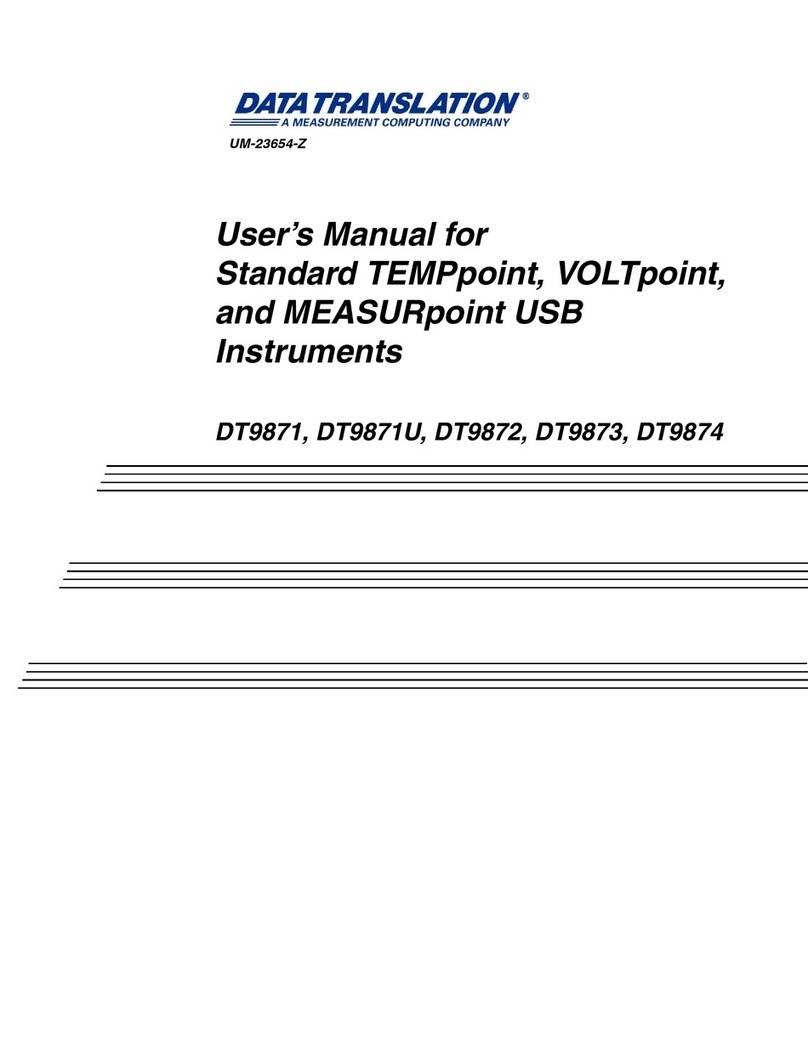
Data Translation
Data Translation DT9871 User manual

Data Translation
Data Translation DT9812 Series User manual
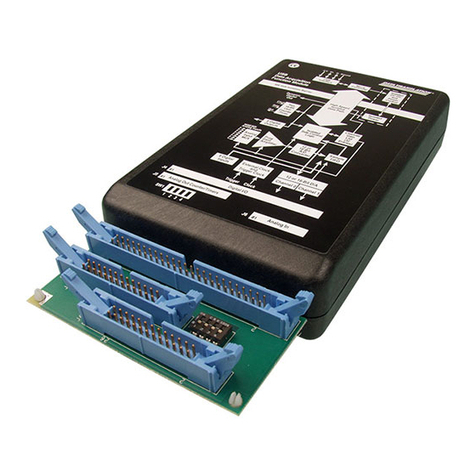
Data Translation
Data Translation DT9800 Series User manual
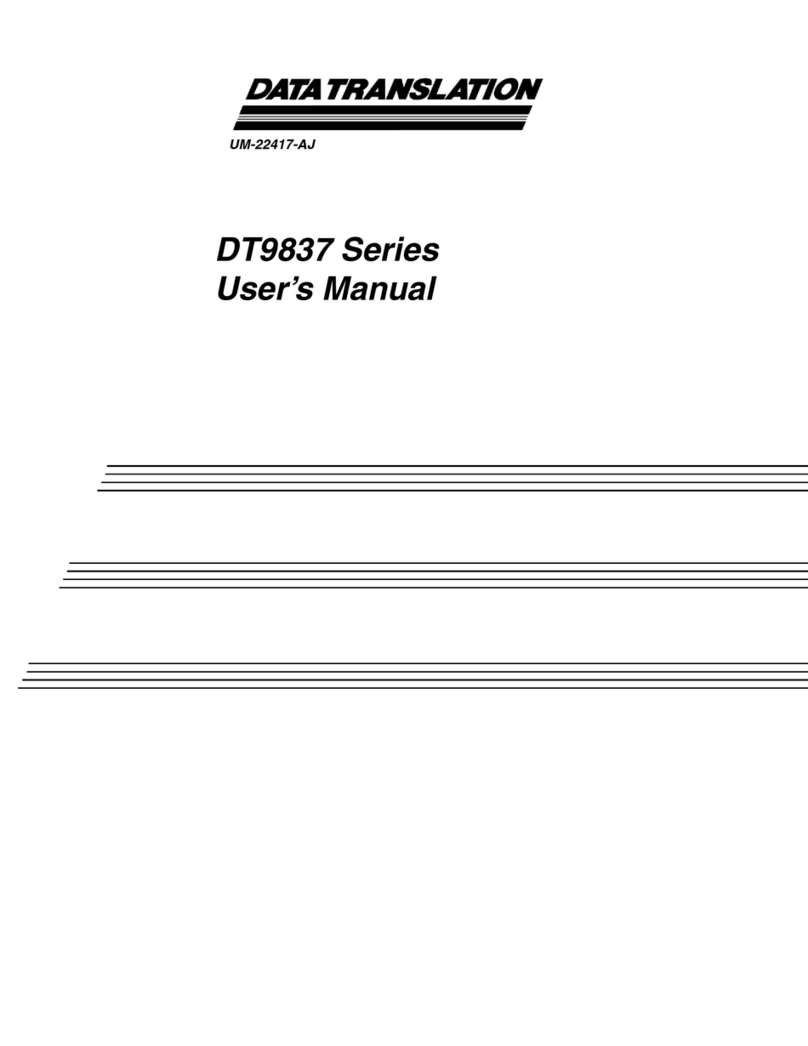
Data Translation
Data Translation DT9837A User manual
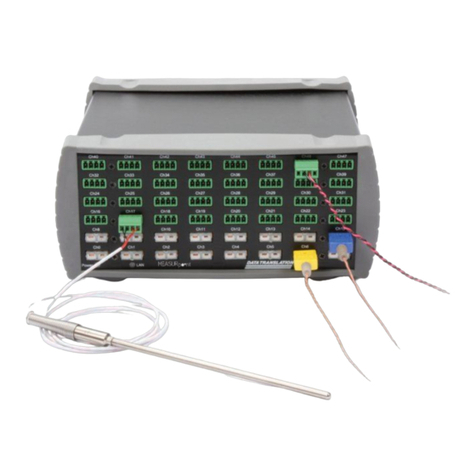
Data Translation
Data Translation DT9871U User manual
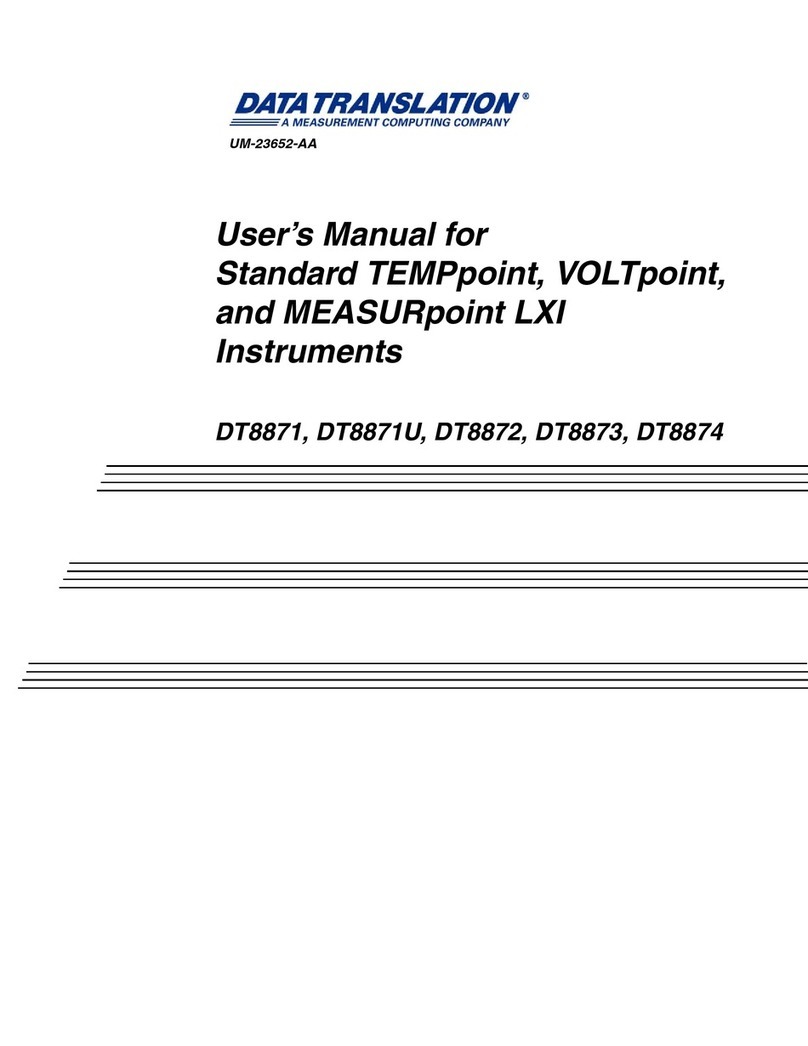
Data Translation
Data Translation DT8871 User manual
Popular Measuring Instrument manuals by other brands

Endress+Hauser
Endress+Hauser Proline Promag H 200 operating instructions
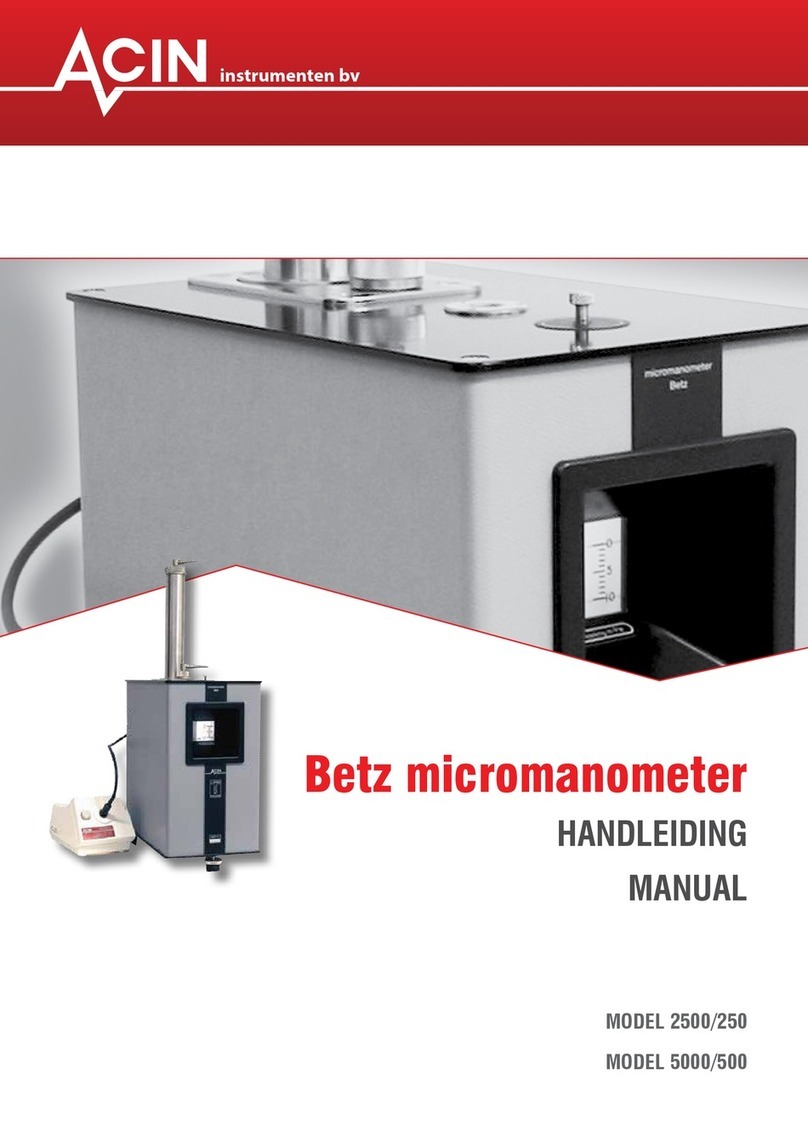
ACIN
ACIN Betz 2500/250 manual
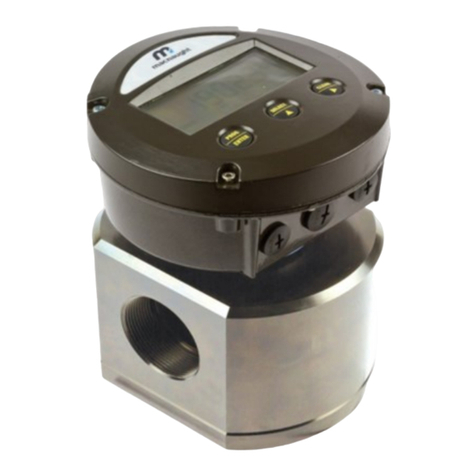
Macnaught
Macnaught MX Series manual

techem
techem MOC Series installation instructions

Danfoss
Danfoss PR-SC4K Direct installation guide
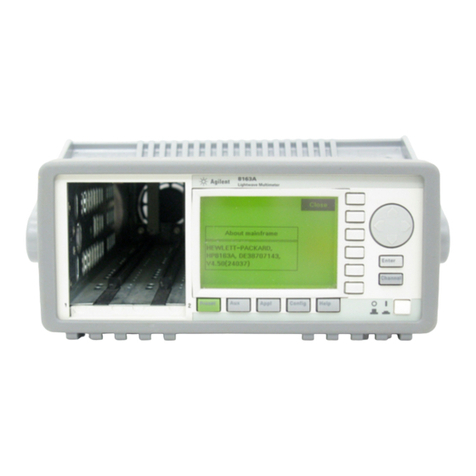
Agilent Technologies
Agilent Technologies Agilent 8163A Programming guide
